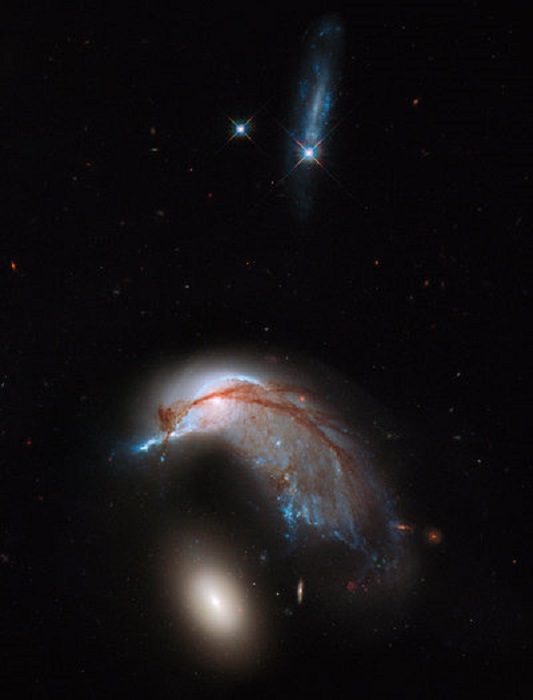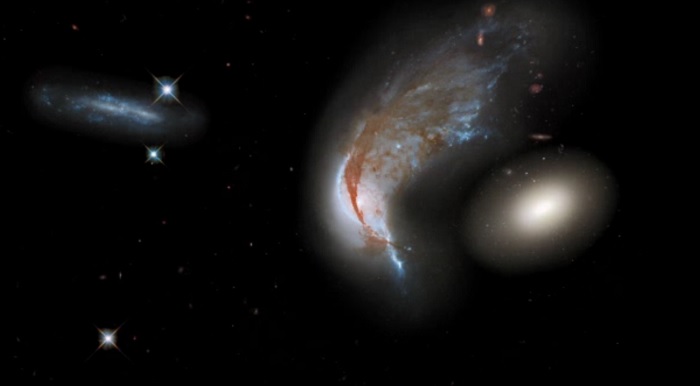.

Arp 142, a pair of galaxies that resemble a penguin and an egg, in a new image from the Hubble Telescope. (NASA, ESA and the Hubble Heritage Team)
.
In case you need a reminder that the universe is a weird and amazing place, check out this photo of a galaxy shaped like a penguin interacting with a galaxy that looks like an egg.
The image, created using data collected by the Hubble Space Telescope, illustrates what can happen when a pair of galaxies get close enough to start ripping each other apart.
The galaxies are located in the constellation Hydra, 400 light-years from Earth. Before it met the egg-shaped galaxy (NGC 2937), the penguin-looking galaxy (NGC 2936) used to look like a pretty, but standard, spiral galaxy.
The two galaxies were likely drifting serenely through intergalactic space -- as galaxies do -- when they came just a bit too close to each other, causing their gravitational fields to interact. That's when NGC 2937 started to distort the shape of NGC 2936.
If you look closely, you can still see remnants of the original spiral structure in the penguin-shaped galaxy. The "eye" of the penguin was once the center of the spiral galaxy, and the blue and red streaks that now form the graceful body of the penguin shape are actually the galaxy's spiral arms, stretched and pulled by the elliptical NGC 2937.
What you can't see in the photo is the violence of the interaction. Dust and gas from the two galaxies are colliding at super speeds, causing new bursts of star formation.
The pair of galaxies is known collectively as Arp 142, and they may eventually merge into one.
The image also includes two bright stars that look to be hanging out just above the two galaxies.
The sparkly blue material around the star on the right is not stardust but, rather, another galaxy. That galaxy is likely too far to have any impact with Arp 142, however.
To see a 3D visualisation of the two galaxies, check out the video below.

Quelle: ESA
